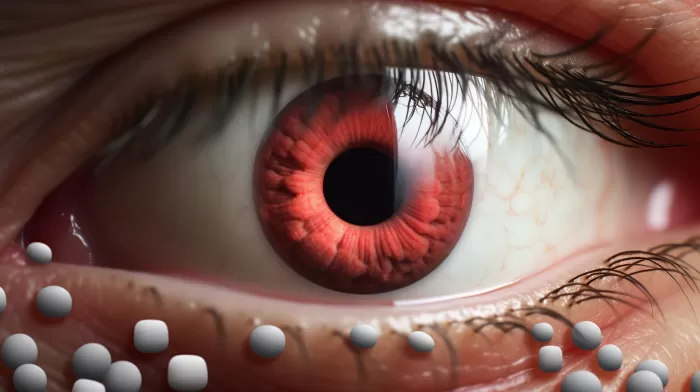Did you know that millions of people worldwide take statin drugs like Lipitor or Zocor to lower their cholesterol? What’s even more surprising is that despite concerns from medical researchers about the potential side effects of these medications, they’re still in use today. Among those side effects is the possible distortion of your vision.
A research study conducted at the University of Texas, which involved the medical records of more than 33,000 people, found a shocking piece of information: statin drugs can potentially increase one’s risk of developing cataracts by 27 percent!
The Study
The participants in the study, ranging from 30 to 85 years old, were residents of San Antonio, Texas. Of the people involved, only about 6,000 of them were on statin drugs at the time, while the other 27,000 did not take them. This study highlights the crucial need for increased awareness about the possible side effects of these medications.
A Deeper Look into Cataracts
Cataracts are a common eye condition, affecting nearly 24.4 million Americans over the age of 40, according to the American Academy of Ophthalmology. They occur when the transparent lens of the eye becomes cloudy, resulting in impaired vision and, in some cases, blindness if left untreated. Cataracts can be caused by various factors, including aging, genetics, and certain medical conditions.
The Role of Cholesterol
Interestingly, the body requires cholesterol to help maintain the transparency of the lenses in our eyes. Cholesterol acts as a natural lubricant and protector for the lens, ensuring that it remains transparent and healthy. However, statin drugs like Lipitor and Zocor work to lower cholesterol levels in the body, which can lead to interference with the lenses’ natural processes and an increased risk of developing cataracts.
Duration of Statin Use Matters
The results of the study at the University of Texas also indicated that the longer an individual is on statin drugs, the more their risk of developing cataracts increases. This suggests that long-term use of these medications may not be as beneficial as previously thought.
Potential Alternative Treatments
While statin drugs are effective in decreasing cholesterol levels, they may not be the best choice for everyone. If you’re concerned about these drugs’ potential to harm your eyes, you might want to explore some alternative treatments for lowering your cholesterol.
Lifestyle changes such as improving your diet, engaging in regular physical activity, and maintaining a healthy weight can greatly impact your cholesterol levels. Foods high in soluble fiber, like oatmeal, fruits, and legumes, can help lower bad cholesterol levels, while foods rich in omega-3 fatty acids, such as fish and nuts, can bolster good cholesterol in the body.
In addition to making healthy lifestyle choices, some natural supplements may help to reduce cholesterol. Niacin, or vitamin B3, is a supplement known for its cholesterol-lowering properties. However, it’s essential to discuss any potential supplements with your healthcare provider before beginning a new regimen.
Next Steps and Precautions
If you’re currently taking a statin drug to lower your cholesterol and are concerned about the potential risks associated with these medications, it’s essential to have a thorough conversation with your healthcare provider. They can help you assess your individual risk factors and guide you in determining the best course of action for your specific situation.
It’s also crucial to remember that regular eye exams are critical, especially if you’re using cholesterol-lowering medications. Early detection of cataracts and any other eye conditions can lead to more effective treatment options and better overall eye health.
The Bottom Line
The University of Texas study is an eye-opening reminder that every medication comes with potential side effects. So, while statin drugs may be effective in lowering cholesterol levels, it’s vital to weigh the potential risks and benefits of their use, especially with an increased risk of eye issues like cataracts.



